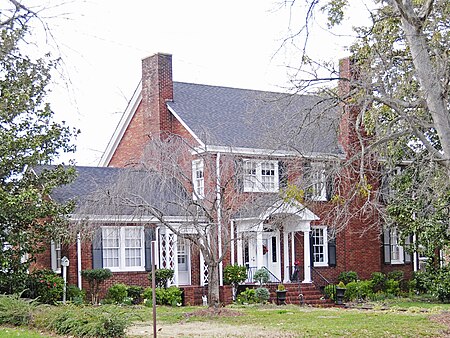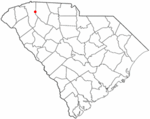Robert G. Turner House
Colonial Revival architecture in South CarolinaGreer, South CarolinaHouses completed in 1935Houses in Greenville County, South CarolinaHouses on the National Register of Historic Places in South Carolina ... and 2 more
National Register of Historic Places in Greenville County, South CarolinaUpstate South Carolina Registered Historic Place stubs

The Robert G. Turner House is located in Greer, South Carolina. The Colonial Revival style brick veneered house was designed by the prominent Greenville, South Carolina-based architect William Riddle Ward for Robert Gibbs Turner and Turner's wife, Mary. Ward also designed the one-story brick veneered garage to match the house.
Excerpt from the Wikipedia article Robert G. Turner House (License: CC BY-SA 3.0, Authors, Images).Robert G. Turner House
West Fairview Avenue, Greer
Geographical coordinates (GPS) Address External links Nearby Places Show on map
Geographical coordinates (GPS)
| Latitude | Longitude |
|---|---|
| N 34.942727 ° | E -82.224742 ° |
Address
Robert G. Turner House
West Fairview Avenue
29650 Greer
South Carolina, United States
Open on Google Maps










